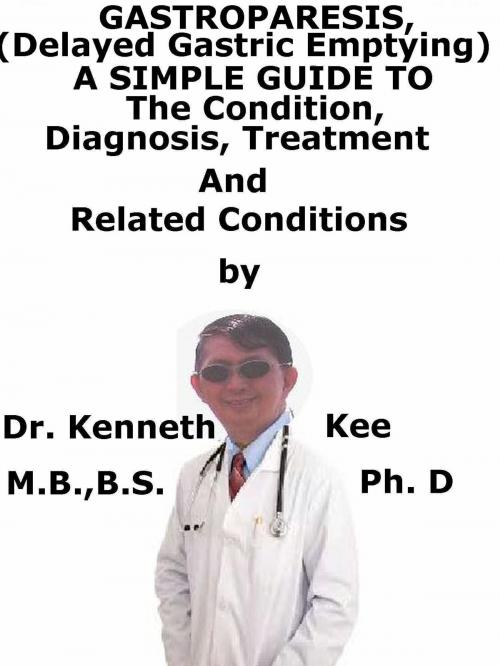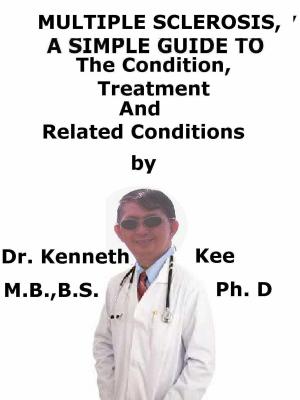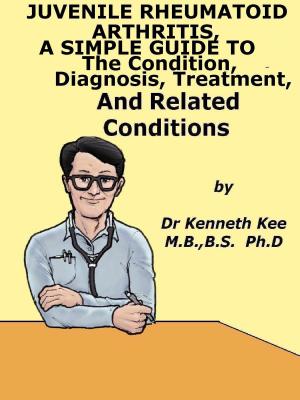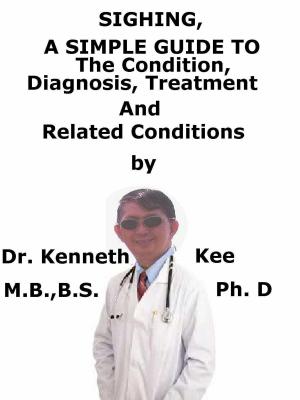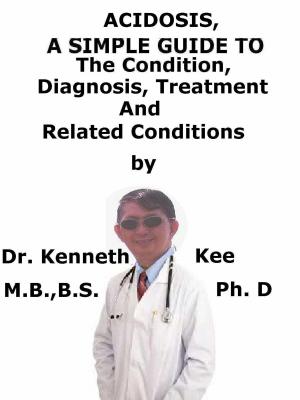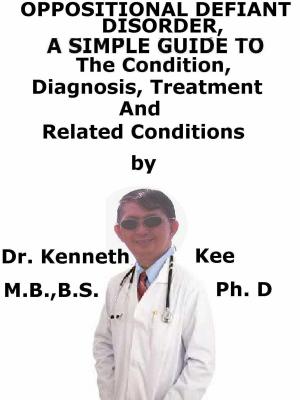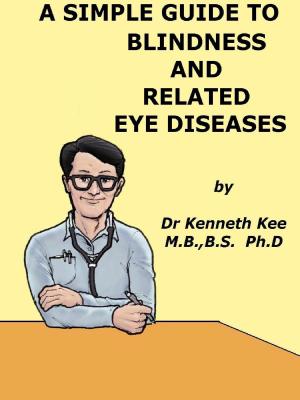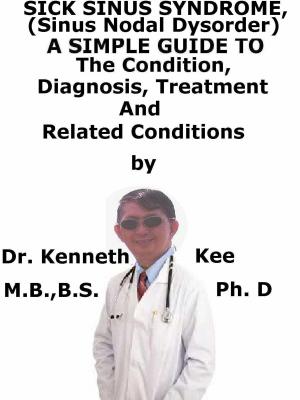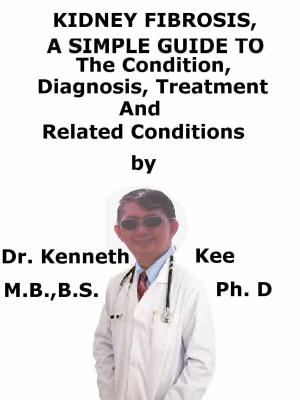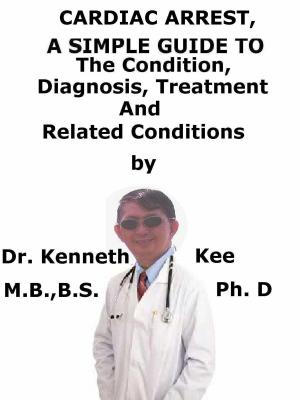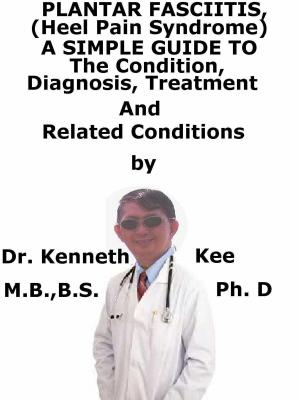Gastroparesis, (Delayed Gastric Emptying) A Simple Guide To The Condition, Diagnosis, Treatment And Related Conditions
Nonfiction, Health & Well Being, Medical, Specialties, Internal Medicine, Gastroenterology, Health, Ailments & Diseases, Abdominal| Author: | Kenneth Kee | ISBN: | 9781370142804 |
| Publisher: | Kenneth Kee | Publication: | November 27, 2016 |
| Imprint: | Smashwords Edition | Language: | English |
| Author: | Kenneth Kee |
| ISBN: | 9781370142804 |
| Publisher: | Kenneth Kee |
| Publication: | November 27, 2016 |
| Imprint: | Smashwords Edition |
| Language: | English |
Gastroparesis is a medical disorder that decreases the ability of the stomach to empty its contents.
It does not involve an obstruction (blockage).
The spontaneous motility of the muscles in the stomach does not move normally.
Normally, strong muscular contractions push food through the digestive tract.
But in gastroparesis, the stomach's movements work poorly or not at all.
This stops the stomach from emptying properly.
Gastroparesis can affect normal digestion, produce nausea and vomiting, and induce problems with blood sugar levels and nutrition.
Some people form gastroparesis after surgery.
There is no cure for gastroparesis, but altered diet, along with medicines, can present some relief.
Gastroparesis is thought to be the result of a difficulty with the nerves and muscles regulating the emptying of the stomach.
If these nerves are injured, the muscles of the stomach may not function properly and the movement of food can slow down.
A injured vagus nerve avoids the muscles in the stomach and intestine from functioning, preventing food from moving through the digestive system properly.
Risk factors for gastroparesis are:
1. Diabetes
2. Gastrectomy (surgery to remove part of the stomach)
3. Systemic sclerosis
4. Use of medicine that blocks certain nerve signals (anticholinergic medicine)
But in many patients, gastroparesis is thought to be produced by injury to a nerve that regulates the stomach muscles (vagus nerve).
Diabetes is one of the most frequent causes for gastroparesis.
Other causes are:
1. Infections,
2. Endocrine disorders like hypothyroidism,
There are many symptoms of gastroparesis, such as:
1. Vomiting undigested food
2. Nausea
3. A feeling of fullness after eating just a few bites
4. Abdominal bloating
Diagnosis is by:
1. Gastric emptying study - most essential test
This test affects eating a light meal
A scanner that identifies the movement of the radioactive material is positioned over the abdomen to regulate the rate at which food exits the stomach
2. Gastroduodenal manometry evaluates the action of the smooth muscle of the stomach and small intestine in contracting and relaxing
Treatment is by:
1. Diet changes to soft food
If liquids are easier for the patient to swallow, make an effort to provide soups and pureed foods
Drink water throughout each meal
2. Exercise after eating
3. Feeding tube.
A transient feeding tube called a nasojejunal tube may be given to the patient first, which is placed through the nose to pass nutrients directly into their small intestine
TABLE OF CONTENT
Introduction
Chapter 1 Gastroparesis
Chapter 2 Causes
Chapter 3 Symptoms
Chapter 4 Diagnosis
Chapter 5 Treatment
Chapter 6 Prognosis
Chapter 7 Peptic Ulcer
Chapter 8 Indigestion
Epilogue
Gastroparesis is a medical disorder that decreases the ability of the stomach to empty its contents.
It does not involve an obstruction (blockage).
The spontaneous motility of the muscles in the stomach does not move normally.
Normally, strong muscular contractions push food through the digestive tract.
But in gastroparesis, the stomach's movements work poorly or not at all.
This stops the stomach from emptying properly.
Gastroparesis can affect normal digestion, produce nausea and vomiting, and induce problems with blood sugar levels and nutrition.
Some people form gastroparesis after surgery.
There is no cure for gastroparesis, but altered diet, along with medicines, can present some relief.
Gastroparesis is thought to be the result of a difficulty with the nerves and muscles regulating the emptying of the stomach.
If these nerves are injured, the muscles of the stomach may not function properly and the movement of food can slow down.
A injured vagus nerve avoids the muscles in the stomach and intestine from functioning, preventing food from moving through the digestive system properly.
Risk factors for gastroparesis are:
1. Diabetes
2. Gastrectomy (surgery to remove part of the stomach)
3. Systemic sclerosis
4. Use of medicine that blocks certain nerve signals (anticholinergic medicine)
But in many patients, gastroparesis is thought to be produced by injury to a nerve that regulates the stomach muscles (vagus nerve).
Diabetes is one of the most frequent causes for gastroparesis.
Other causes are:
1. Infections,
2. Endocrine disorders like hypothyroidism,
There are many symptoms of gastroparesis, such as:
1. Vomiting undigested food
2. Nausea
3. A feeling of fullness after eating just a few bites
4. Abdominal bloating
Diagnosis is by:
1. Gastric emptying study - most essential test
This test affects eating a light meal
A scanner that identifies the movement of the radioactive material is positioned over the abdomen to regulate the rate at which food exits the stomach
2. Gastroduodenal manometry evaluates the action of the smooth muscle of the stomach and small intestine in contracting and relaxing
Treatment is by:
1. Diet changes to soft food
If liquids are easier for the patient to swallow, make an effort to provide soups and pureed foods
Drink water throughout each meal
2. Exercise after eating
3. Feeding tube.
A transient feeding tube called a nasojejunal tube may be given to the patient first, which is placed through the nose to pass nutrients directly into their small intestine
TABLE OF CONTENT
Introduction
Chapter 1 Gastroparesis
Chapter 2 Causes
Chapter 3 Symptoms
Chapter 4 Diagnosis
Chapter 5 Treatment
Chapter 6 Prognosis
Chapter 7 Peptic Ulcer
Chapter 8 Indigestion
Epilogue
